

 Nixon's War & Vietnamization: 1968-1973
Nixon's War & Vietnamization: 1968-1973U.S. President Richard M. Nixon campaigned in 1968 with a claim to have a "secret plan" to end the war. The war wound down after 1969 while unproductive peace talks went on in Paris. Domestic support for the war in Vietnam continued to diminish during Nixon's administration, with Vietnamizaion the main strategy to facilitate U.S. withdrawal.


Secretary of State Henry Kissinger, Vice President Nelson Rockefeller, and President Ford discuss the American evacuation of Saigon, April 28, 1975.

 Vice President Nelson Rockefeller
Vice President Nelson Rockefeller


White Christmas in April: The Collapse of South Vietnam, 1975
By J. Edward Lee and Toby Haynsworth
When the last of the American POW’s were released by Hanoi in March of 1973, most Americans dismissed Vietnam from their consciousness. However, the Paris Peace Accords negotiated by Henry Kissinger and Le Duc Tho provided for an expanded Defense Attaché Office under the direction of the American Ambassador to South Vietnam. This office’s staff was limited to fifty uniformed and 1200 civilian American personnel. These dedicated men and women were tasked with the management of the military assistance programs designed to provide the logistical support of the South Vietnamese military authorized by the Paris Peace Accords and promised by the President of the United States.
White Christmas in April: The Collapse of South Vietnam, 1975 describes how the Vietnam War actually ended in April 1975. This is accomplished by letting twenty-seven of the people who were either involved in the massive evacuation of Americans, Vietnamese, and third country nationals, or who were close observers of the event, give their personal accounts of how the end to America’s efforts to defend the independence of the people of South Vietnam came to pass.
The narrators in White Christmas in April are women and men, military and civilian, American and Vietnamese. Taken together, they tell a story that has a beginning, a middle, and an end. It is a story of courage, confusion, politics, dedication, greed, duplicity, anger, pain, joy, zeal, stupidity, hesitation, and gallantry. In other words, it describes the American experience in Vietnam in microcosm.






Some of what the narrators had to say:
"When I was at NATO, the news of the collapse of South Vietnam was probably the saddest day of my life. I had told President Ford that he had to roll up his sleeves like Harry Truman and go up to the Hill and have it out with those guys. I think that I would have bombed the North Vietnamese and let them impeach me if they wanted."
General Alexander Haig, NATO Commander and White House Chief of Staff.
"When the end came and you sent a small contingent of marines to secure Tan Son Nhut on April 29, we knew that they would not be there long. In my opinion, there was a kind of ‘gentleman’s agreement’ to allow the evacuation to go forward. We stopped fighting and shelling for a few hours. We didn’t shoot much. Then you were gone."
Tran Trong Khanh, ex-Vietcong officer.
"Starting with our rock bottom fiscal year 1975 budget of $1.126 billion, I degraded it in hundred million dollar, country killing, increments. I ended my cable with this: ‘$600 million level–write off South Vietnam as a bad investment and a broken promise.’"
General John Murray, Defense Attaché in Saigon in 1974.
"At about four o’clock in the morning (of April 30), the ambassador and I went up to the remaining communications set up, the last one. We sent our final message. The date-time group of that message was 291215Z. The message said, ‘Plan to close mission about 0430, 30 April local time. This is the last message from Embassy Saigon.’"
Mr. Wolfgang Lehmann, Deputy Chief of Mission, Saigon.
"There were two U.S.-type CIA agents who had twelve bus loads of Vietnamese CIA agents that they had collected around the countryside, and they were either told, or couldn’t get to Tan Son Nhut, so they got to the Mike-Mike piers in Saigon, and I picked them up on the barge that I was taking down the river, and we went out together."
Mr. William Ryder, Military Sealift Command, Saigon, Operations Officer.
"The exodus had started. For the next ten days I never slept more than a few minutes at a time. We worked around the clock. The first day we put up over 1,000 people. My job was getting them organized into planeloads and handling problems. One day we had 7,000 people to get out, and, thank God, our team had gotten very efficient by then.
Ms. Sally Vinyard, Director of Housing, Saigon.
"Our game plan was very simple because we were taking a lot of sniper fire up there on the roof. The game plan was, when the bird set down, we already had stacks of Vietnamese in the ladder well. Before that bird set down, we had them moving. We got the bird loaded, and they were out of there. We had to do it quickly because of the sniper fire."
Sergeant Terry Bennington, USMC Security Guard.
























































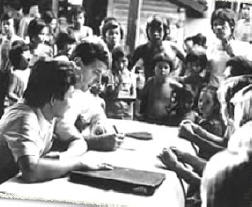






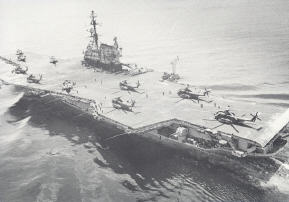















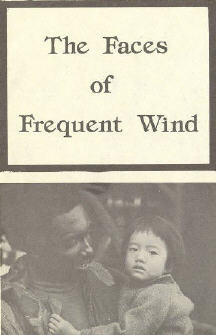


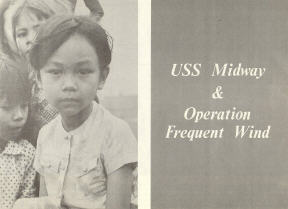
















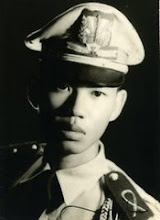
No comments:
Post a Comment